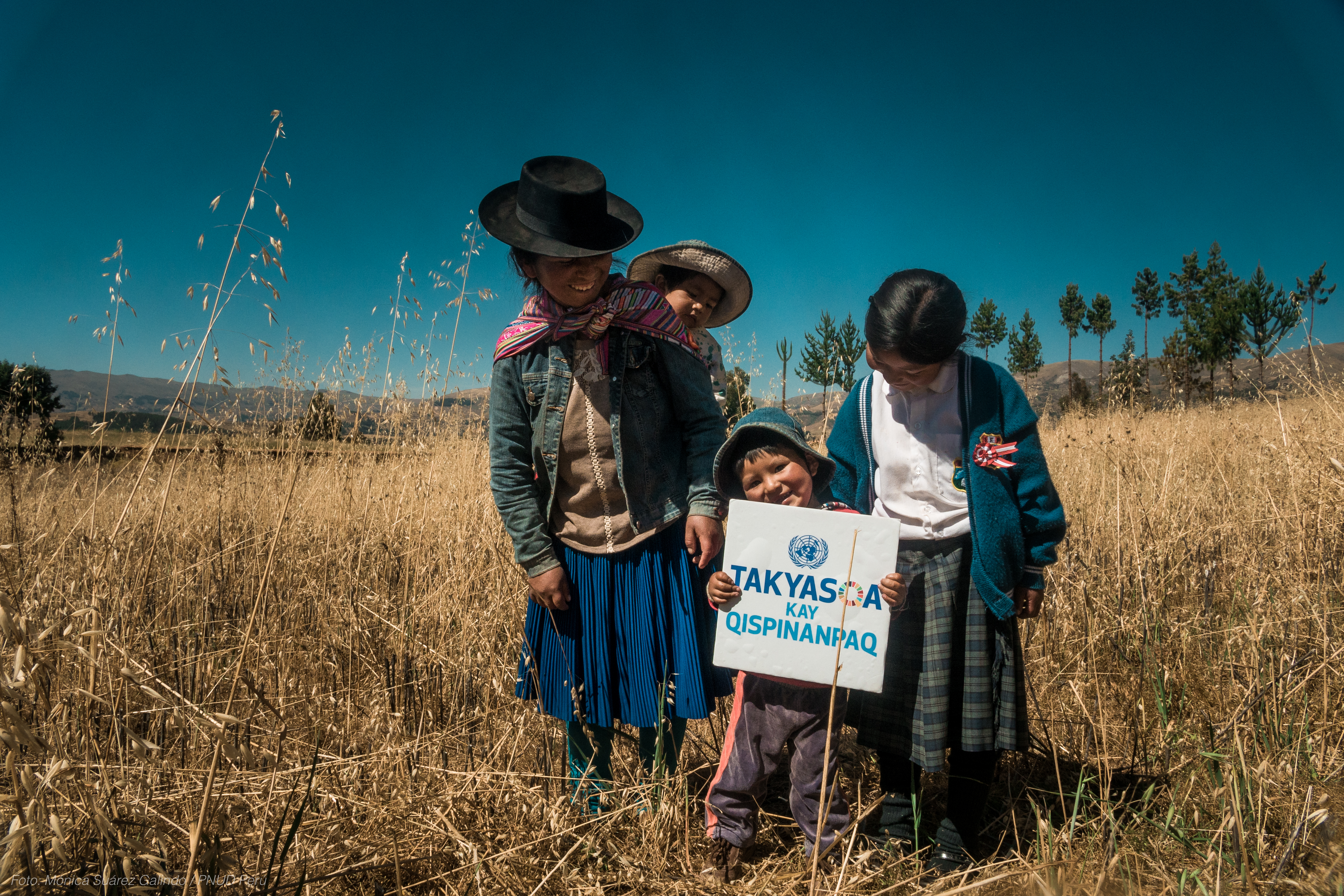By Bettina Woll, UNDP Resident Representative in Peru
Seventeen goals to save the world
15 de Septiembre de 2023

The Sustainable Development Goals (SDGs) set out a shared vision for a future of well-being, prosperity, and sustainability for all people and the planet. But with just seven years to go until the deadline for achieving them, the world faces a number of challenges that threaten their achievement. The climate crisis, political uncertainty, setbacks caused by the COVID-19 pandemic, and the impact of the war in Ukraine have all slowed the path to achieving the SDGs. On the other hand, for the first time in 32 years, the Human Development Report (HDR) of the United Nations Development Programme (UNDP) has recorded a global setback in well-being for two consecutive years, a trend that suggests that we are moving further away from achieving them.
In the case of Peru, the country is facing a complex context with high levels of uncertainty. The threat of the climate crisis (which is materializing with the intense El Niño phenomenon that is approaching), political polarization and the mistrust it generates, and the impact of the country's high inflation are some of the circumstances that cause this uncertainty. It is also estimated that Peru's short-term growth expectations are between 1% and 1.5%, making 2023 the year with the worst growth in the last two decades.
In this context, we face the challenge of achieving sustainable development with low growth, high distrust, and uncertainty, while seeking solutions to some of today's most pressing vulnerabilities.
Peru has suffered a setback of almost a decade in its progress towards poverty eradication. Monetary poverty currently affects 27.5% of the population, and around 7 out of 10 people in the country are poor or at risk of falling into poverty. In addition, 78% of the population (70% in urban areas) work in the informal sector, which limits their access to social security, minimum wages, and health insurance.
Although the coverage of the Integral Health Insurance (SIS) has increased and public spending on health has risen, there is still a significant deficit in the infrastructure and quality of public health services. For example, despite the improvement in the indicators of the coverage of the education system in recent decades, there is still a significant gap in the quality of learning and education. The percentage of primary school pupils with satisfactory results in reading and mathematics tests is very low.
On the other hand, the latest Latinobarómetro report shows that only 8% of Peruvians are satisfied with democracy. High levels of distrust make people more prone to extreme political opinions and polarization, which puts institutions at risk. According to the National Institute of Statistics and Informatics, we observe high levels of distrust in institutions in all three branches of government.
The SDGs offer us a systemic vision, in which all indicators are interlinked and progress in one necessarily affects the others. To achieve them, we need to promote inclusive growth that focuses on the vulnerabilities of our societies and seeks to remove the structural barriers that limit growth, prioritizing sectors with high development potential.
It is necessary to encourage public and private investment. For example, in those sectors that allow us to improve access to different markets for goods and services, such as the physical infrastructure sectors of transport and communications. We also need to promote public investment in health and education to increase the number of facilities and improve the quality of public services, which will increase productivity and reduce poverty and inequality.
It is essential that we incorporate the SDGs into the planning of public policies for the country's development, using the framework of targets and indicators that they provide. To achieve this, we must strengthen the articulation between sectors and between levels of government, accompanied by a commitment to transparency in order to regain people's trust and reorient the relationship between citizens and institutions.
With only seven years left to achieve the goals, we have a responsibility to review how we've progressed and what actions we will take to achieve them. This week, countries from around the world will gather in New York for the SDG Summit, where they are expected to make effective commitments that include structural changes to accelerate the achievement of the goals. Never before in history have we had so much knowledge, technology, and resources at our disposal to tackle inequalities and put a plan in place to save the planet. Never before has it been more urgent.

 Locations
Locations